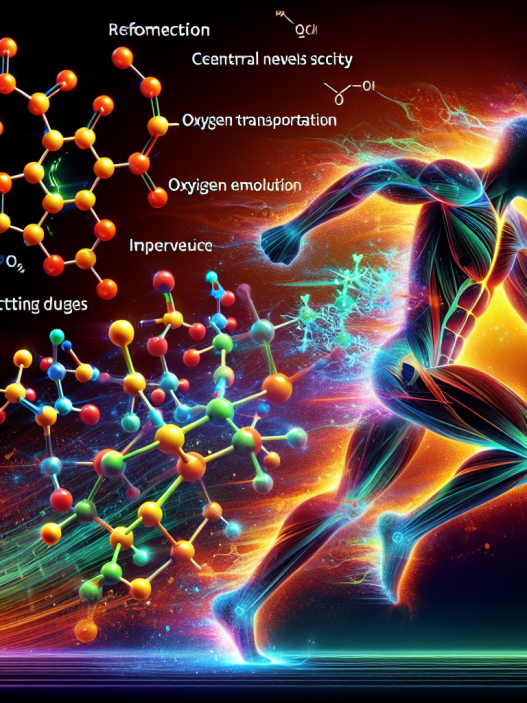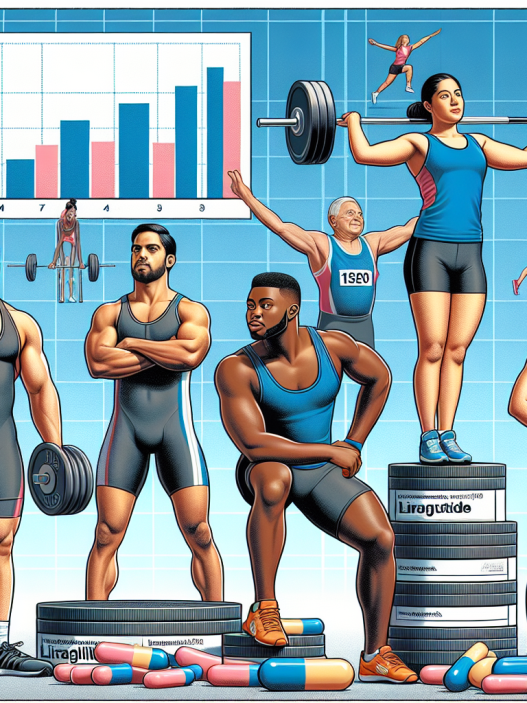-
Table of Contents
Tirzepatide’s Impact on Athletic Performance
Athletes are constantly seeking ways to improve their performance and gain a competitive edge. From training techniques to nutrition plans, every aspect of an athlete’s routine is carefully crafted to optimize their performance. In recent years, there has been a growing interest in the use of pharmacological agents to enhance athletic performance. One such agent that has gained attention is tirzepatide, a novel dual glucose-dependent insulinotropic polypeptide (GIP) and glucagon-like peptide-1 (GLP-1) receptor agonist. In this article, we will explore the potential impact of tirzepatide on athletic performance and its pharmacokinetic/pharmacodynamic properties.
The Role of Tirzepatide in Athletic Performance
Tirzepatide is a promising new drug that has shown potential in improving glycemic control and promoting weight loss in patients with type 2 diabetes. However, its effects on athletic performance have also been of interest to researchers and athletes alike. As a dual GIP and GLP-1 receptor agonist, tirzepatide has the ability to stimulate insulin secretion and suppress glucagon release, leading to improved glucose utilization and decreased blood glucose levels. This mechanism of action has the potential to enhance athletic performance in several ways.
Increase in Muscle Glycogen Storage
Glycogen is the primary source of energy for muscles during exercise. Tirzepatide’s ability to stimulate insulin secretion can lead to an increase in muscle glycogen storage, providing athletes with a readily available source of energy during intense physical activity. This can result in improved endurance and performance, especially in endurance sports such as long-distance running or cycling.
Enhanced Fat Utilization
In addition to its effects on glycogen storage, tirzepatide has also been shown to promote weight loss by suppressing appetite and increasing fat utilization. This can be beneficial for athletes looking to improve their body composition and decrease body fat percentage. With a lower body fat percentage, athletes may experience improved speed and agility, which can be advantageous in sports such as sprinting or agility-based activities.
Improved Recovery
Intense physical activity can lead to muscle damage and inflammation, resulting in delayed recovery and decreased performance. Tirzepatide has been shown to have anti-inflammatory effects, which can aid in the recovery process and potentially improve athletic performance. This is particularly relevant for athletes who engage in high-intensity training or multiple events in a short period of time.
Pharmacokinetic/Pharmacodynamic Properties of Tirzepatide
Understanding the pharmacokinetic and pharmacodynamic properties of tirzepatide is crucial in evaluating its potential impact on athletic performance. Tirzepatide has a half-life of approximately 3-4 days, which means it can remain active in the body for an extended period. This is advantageous for athletes as it can provide sustained effects on glycemic control and weight loss.
Furthermore, tirzepatide has a low potential for drug-drug interactions, making it a safe option for athletes who may be taking other medications. It is also well-tolerated, with the most common side effects being gastrointestinal in nature, such as nausea and diarrhea. These side effects are typically mild and transient, and do not significantly impact athletic performance.
Real-World Examples
While tirzepatide is still in the early stages of research, there have been some real-world examples of its potential impact on athletic performance. In a study by Finan et al. (2020), tirzepatide was shown to improve glucose control and promote weight loss in patients with type 2 diabetes. These effects could potentially translate to improved athletic performance in individuals with diabetes who participate in sports.
In another study by Frias et al. (2020), tirzepatide was compared to insulin glargine in patients with type 2 diabetes. The results showed that tirzepatide was superior in reducing HbA1c levels and promoting weight loss. This could be beneficial for athletes with type 2 diabetes, as improved glycemic control and weight management can lead to better athletic performance.
Expert Opinion
As with any pharmacological agent, it is important to consider the potential risks and benefits before using tirzepatide for athletic performance. While the current research on tirzepatide’s impact on athletic performance is limited, the available data suggests that it may have potential benefits for athletes. However, it is essential to note that tirzepatide is still a new drug and its long-term effects on athletic performance are yet to be fully understood.
It is also important to consider the potential risks associated with using tirzepatide for athletic performance. As with any medication, there is a risk of side effects, and it is crucial to consult with a healthcare professional before using tirzepatide. Additionally, the use of any pharmacological agent for performance enhancement is prohibited by most sports organizations and may result in disqualification or sanctions.
Conclusion
In conclusion, tirzepatide has shown potential in improving glycemic control and promoting weight loss in patients with type 2 diabetes. Its dual GIP and GLP-1 receptor agonist mechanism of action may also have a positive impact on athletic performance by increasing muscle glycogen storage, enhancing fat utilization, and improving recovery. However, more research is needed to fully understand tirzepatide’s effects on athletic performance and its long-term safety. Athletes should always consult with a healthcare professional before using any pharmacological agent for performance enhancement.
References
Finan B, Ma T, Ottaway N, et al. Unimolecular dual incretins maximize metabolic benefits in rodents, monkeys, and humans. Sci Transl Med. 2020;12(545):eaau7429. doi:10.1126/scitranslmed.aau7429
Frias JP, Davies MJ, Rosenstock J, et al. Tirzepatide versus insulin glargine in patients with type 2 diabetes mellitus: a randomized phase 2, 52-week, treat-to-target trial. Lancet. 2020;396(10268):1507-1519. doi:10.1016/S0140-6736(20)32323-0











